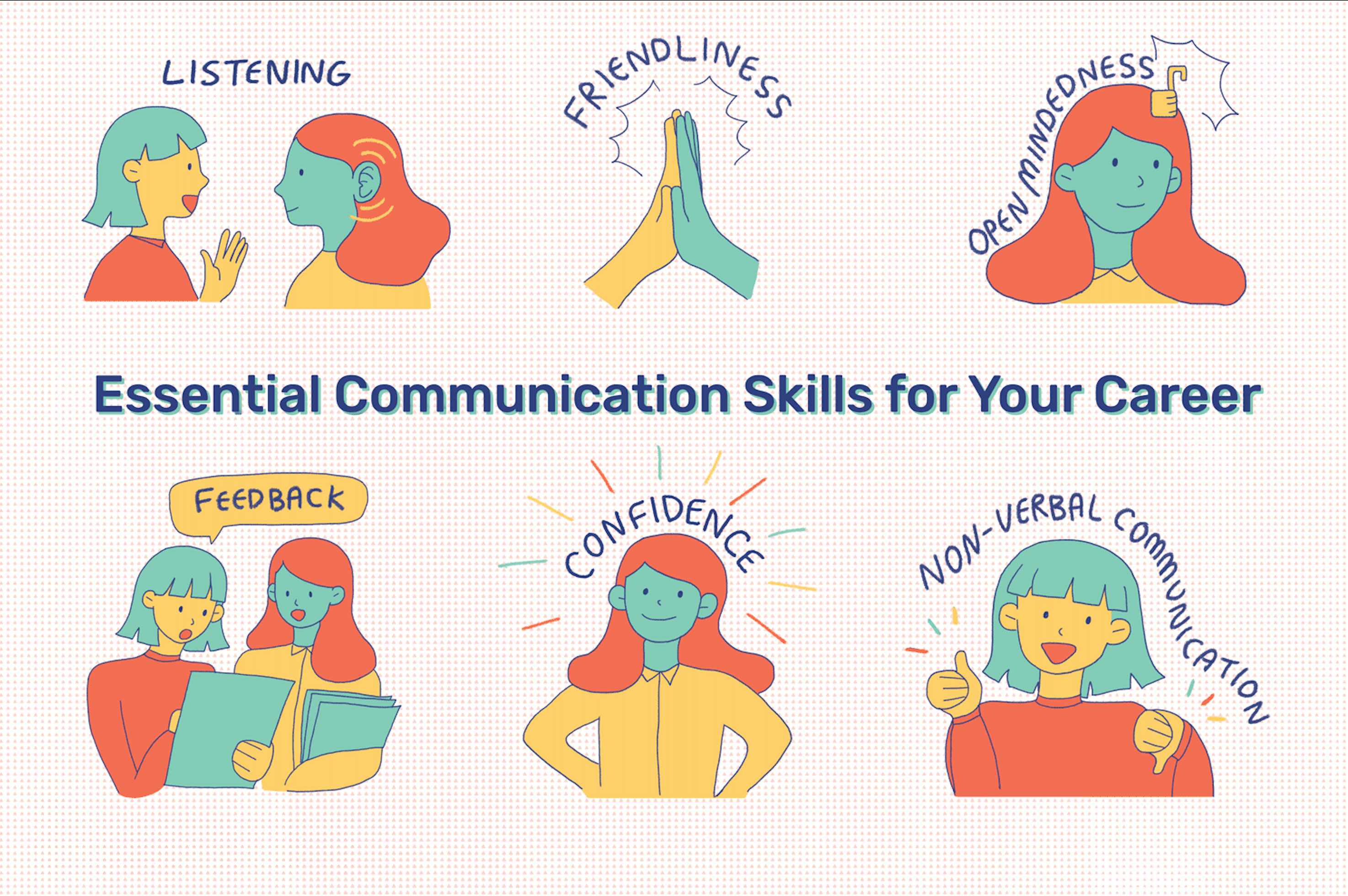Engaging in dialogue with individuals experiencing mental disorders presents both challenges and opportunities for personal growth and connection. By approaching these interactions with empathy and a genuine desire to understand, we can unlock the potential for profound and fulfilling conversations. This article aims to equip you with valuable insights and practical strategies to enhance your communication skills in such scenarios. Whether you're conducting an interview, discussing personal experiences with mental health, or discerning when it might be best to take a step back, these guidelines are designed to help you navigate these exchanges with sensitivity and confidence.
Understanding The Context

Before engaging in any conversation, it's crucial to understand the context and the mental disorder in question. Each condition, whether it's anxiety, depression, or schizophrenia, requires unique approaches. By familiarizing yourself with the individual's specific needs and symptoms, you can create a supportive environment that encourages open dialogue. Doing your research beforehand is essential, especially in professional settings like learning how to interview a person with a mental disorder. This preparation not only helps in avoiding potential triggers but also in asking the right questions that can lead to a more meaningful and productive interaction. By being empathetic and patient, you can ensure that the conversation remains respectful and understanding. It’s about making the person feel heard and validated, rather than judged, which can significantly improve their willingness to share and trust in the process. Remember, effective communication is not just about speaking, but also about listening with intent and compassion..
Creating A Safe And Comfortable Environment

One of the key aspects of fostering a supportive environment is to approach the conversation with empathy and understanding. It's important to acknowledge the individual's feelings and validate their experiences, reinforcing that their emotions are legitimate and heard. This can help in building trust and encouraging open dialogue. It's also beneficial to be mindful of nonverbal cues, such as maintaining appropriate eye contact and a gentle tone of voice, as they can convey warmth and sincerity. Additionally, offering resources or suggesting professional support when appropriate shows a commitment to their well-being. Ultimately, the goal is to create a space where the person feels respected and valued, empowering them to share their journey without hesitation..
Utilizing Effective Communication Skills

Effective communication, especially in sensitive situations such as interviewing a person with a mental disorder, requires a delicate balance of speaking, listening, and empathy. Active listening plays a crucial role in this dynamic, demanding full presence and genuine engagement from the listener. It involves not just hearing the words spoken, but also understanding the emotions and perspectives behind them, allowing the speaker to feel acknowledged and respected. By asking open-ended questions, the interviewer can encourage the individual to express themselves more freely, thus creating a safe space where thoughts and feelings can be shared without judgment. This approach not only fosters trust but also provides valuable insights into the person's experiences, helping to build a more comprehensive understanding that can inform subsequent interactions and support. Whether in therapeutic settings or everyday interactions, mastering the art of active listening and empathetic engagement is key to bridging communication gaps and nurturing authentic connections..
When To Tell Your Partner About Your Mental Illness

Deciding when to share your mental health journey with a partner is a deeply personal choice. It's essential to assess the relationship's depth and trust level. Ideally, this disclosure comes when both parties are comfortable and can discuss such topics openly. Being honest about one's mental health can foster a stronger relationship and establish a foundation of understanding and support. When you engage in this conversation, it offers both you and your partner an opportunity to deepen your emotional connection. This transparency not only encourages empathy and patience but also allows for the development of coping strategies that are mutually beneficial. Sharing your journey can also help dismantle stigma and create a safe space for both of you to express vulnerabilities without fear of judgment. Ultimately, such openness can transform the relationship into a partnership grounded in genuine care and mutual respect, where each partner feels valued and heard..
Recognizing Boundaries And Limits

When interacting with individuals who have mental disorders, it's essential to maintain an awareness of personal boundaries to foster a healthy dialogue. Recognizing moments when the conversation feels too intense can be beneficial for both parties, allowing for a necessary pause and the opportunity to regroup before continuing the discussion. This approach can prevent misunderstandings and emotional strain, ensuring that the conversation remains respectful and constructive. Cultivating an environment where both participants feel comfortable expressing their comfort levels can enhance mutual understanding and communication. Remember, it's perfectly acceptable to pause and revisit the dialogue later, as this can help maintain a supportive and understanding relationship..
When To Walk Away From Someone With Mental Illness

There are situations where it may be necessary to walk away, not as a rejection but as a recognition of one's limitations. In a complex world full of nuanced relationships and interactions, there are times when disengaging is a powerful acknowledgment of personal boundaries. When interactions become harmful or emotionally draining, or if someone is struggling with issues that require more than friendship or familial support, stepping back can be a healthy choice. This act of temporary separation isn't about abandoning someone in need but rather about recognizing the point at which one's presence may no longer be beneficial or productive. Understanding when to protect your well-being is crucial, and by doing so, both parties can find the space needed for growth and healing. Encouraging the individual to seek professional support provides a path towards sustained improvement and reflects a true sense of care and responsibility. Ultimately, this withdrawal serves as an invitation for self-discovery and resilience, fostering a deeper respect for one's own limitations while honoring the needs of others..
Promoting Empathy And Respect

Empathy is a vital component in navigating the complex landscape of mental health interactions. It requires a conscious effort to genuinely understand and resonate with the unique experiences each individual brings to the table. Rather than assuming or projecting our own perspectives, we must approach each conversation with an open mind and a compassionate heart. This empathetic approach lays the groundwork for an environment where individuals feel recognized and heard, fostering a sense of trust and safety. By placing empathy at the forefront, we not only validate the person's feelings but also pave the way for constructive and meaningful dialogue, ultimately contributing significantly to their emotional well-being. This commitment to empathy enhances our connections and builds a supportive community where everyone feels valued..
Encouraging Professional Help

While offering support is beneficial, recognizing the limitations of personal help is vital. Encouraging professional counseling or therapy can provide individuals with the tools they need to manage their disorder. Professionals can offer strategies and treatments that loved ones may not be equipped to provide, ensuring the person receives comprehensive care. It is important to acknowledge that while empathy and understanding from family and friends create a strong support network, it is not a substitute for professional care. Therapists and counselors are trained to address complex issues with evidence-based approaches and can offer a tailored plan that considers the unique circumstances of each individual. This professional assistance not only helps in managing symptoms more effectively but also empowers individuals by equipping them with coping mechanisms, thereby fostering long-term resilience and well-being. In encouraging loved ones to seek professional help, we contribute to their healing journey and highlight the importance of prioritizing mental health..
Continuous Learning And Adaptation

Effective communication with someone who has a mental disorder requires continuous learning and adaptation. Mental health is an evolving field, and staying informed about new findings can enhance your ability to communicate effectively. Being open to feedback and willing to adjust your approach demonstrates commitment to nurturing supportive relationships. Practicing empathy and active listening are essential components that can bridge the gap in understanding and reduce the stigma associated with mental disorders. By acknowledging the unique experiences and perspectives of individuals facing mental health challenges, you foster a sense of trust and safety, encouraging more open and honest dialogue. Moreover, utilizing the appropriate language and avoiding assumptions can help in creating a non-judgmental atmosphere where individuals feel valued and respected. By prioritizing communication strategies tailored to the individual's needs, you not only contribute to their mental well-being but also enrich your own understanding of the complexities of mental health..
In conclusion, effective communication with individuals facing mental health challenges hinges on the pillars of compassion, understanding, and patience. By continuously refining our communication skills and mindfully respecting personal boundaries, we can create an environment that nurtures positive and supportive interactions. It's important to recognize when to step back and let professional guidance take precedence, as this can often be crucial in providing the necessary support. Ultimately, prioritizing empathy and maintaining a commitment to ongoing learning and growth will not only enhance our interactions but also contribute significantly to the well-being of those we aim to support. Through these efforts, we can foster a more inclusive and supportive community for individuals navigating the complexities of mental health.


